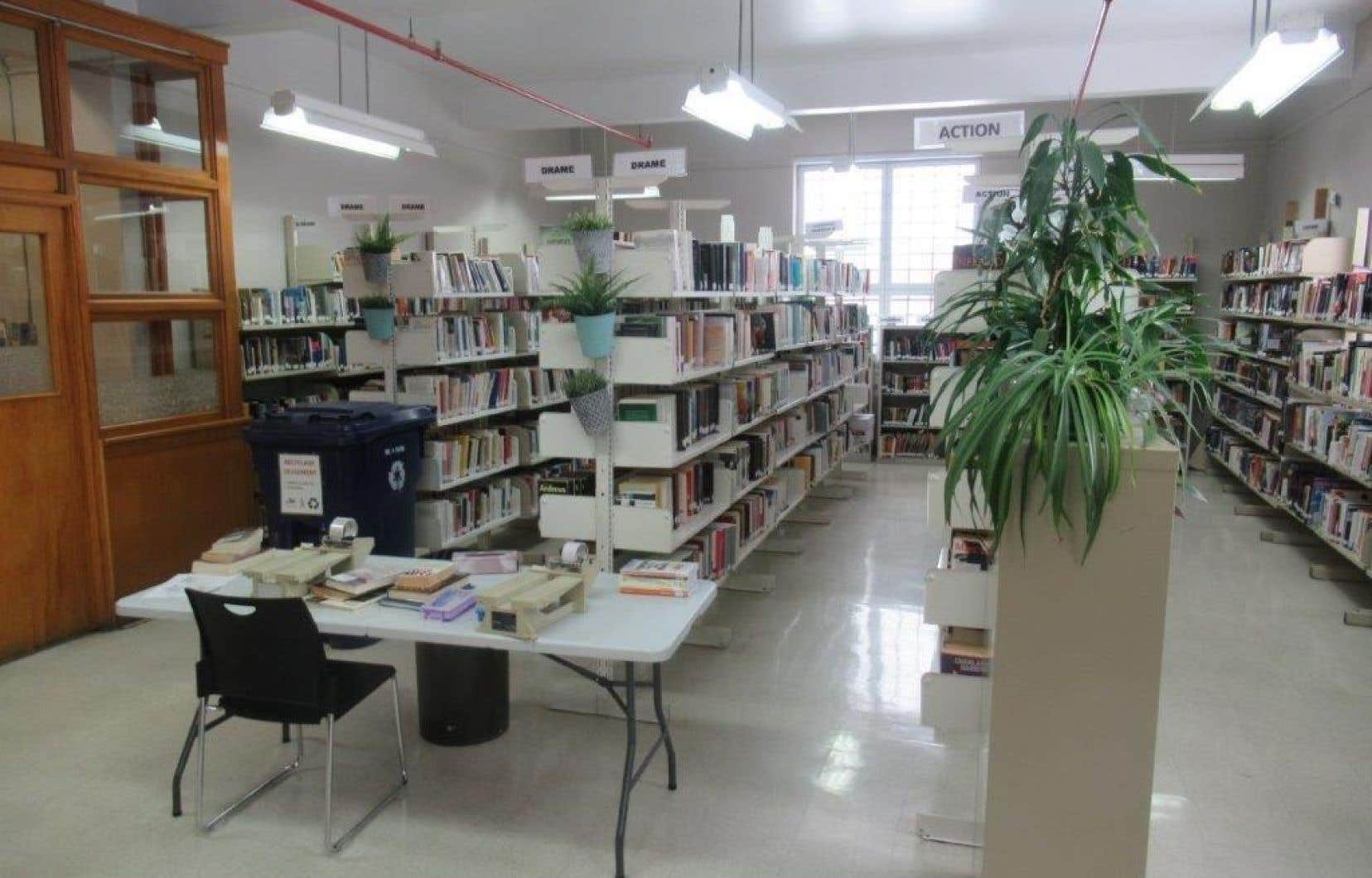“What we have most here is time. Of course, we’re going to read everything, everything from a book, even if we’re less interested in it. The woman who thus speaks of reading, whose The duty will not see the face and will not know the name for security reasons, is at the Leclerc prison in Laval. She is, she says, the smile in her slow, steady voice, a more patient reader since being incarcerated. Her two books borrowed a week—it’s the maximum—she reads them in their entirety, whether she really likes them or not. Small portrait of libraries and, in reflection, readers behind bars.
“The library is really great as a medium to fulfill our mission, particularly for social reintegration,” analyzes Joëlle Poirier, prison counsellor, responsible for activities and the library at the Leclerc detention facility in Laval.
“We are very proud of our library, rejoices Mme Pear tree. We find her beautiful, physically, and she is well stocked, with 10,000 pounds. We have reached our maximum. The challenge, she continues, is that I am not a librarian. And there are all the security issues, which predominate. »
This constant need for security shapes prison libraries. The beautiful library managed by Mme Poirier, for example, is not frequented by women in prison. “Several reasons are cited to explain why users are prevented from visiting the library and freely using the services on site,” writes doctoral student in library science from the University of Montreal, Romy Otayek, in her Current portrait of library services in Quebec prisons.
The security of the premises is the most mentioned (54%), followed by the lack of staff (45%) and the lack of space (36%), such as the number Mme Otayek. His study is the first in Quebec since 1973 to shine a spyglass on the province’s prison libraries. There are 18 detention centers under provincial jurisdiction in Quebec: 15 participated in the researcher’s survey.
Of these 15 establishments, 11 do not allow the prison population to visit and use the services of the library on site. A single institution allows all prisoners to use the library. Three are accessible to all, with the exception of people incarcerated in isolation or in hospital.
Thus, at Leclerc, no loitering between the shelves, a finger dragging on the edges to end up instinctively choosing a title. Two directories circulate. “We have keywords, and the titles of books to choose from,” explains the incarcerated person. The back cover, where the book is summarized, is not accessible. “Word of mouth also helps us choose,” says the one who loves Danielle Steel’s books a lot, and who is reading the series these days. Mystby Rand and Robyn Miller.
“Each establishment has its own way of proceeding,” explains Romy Otayek in an interview. We choose from the catalog and have it delivered, or we pick up our selection. We line up, we quickly choose our book, we leave. There are several ways to do it. » All libraries surveyed are open at least once a week.
read slowly
In Quebec, only one establishment allows the borrowing of up to six documents per week; 40% of establishments allow prisoners to borrow two documents and 20% allow only one possible loan. In addition to books, you can borrow games, puzzles and magazines. Of the 15 establishments, 13 responded that they had no newspaper subscriptions.
There is a significant gap in the utilization rates of prison libraries. The three most frequented note a utilization rate of 90%, 75% and 60% of prisoners. Of the twelve establishments that answered this question, six are at 25% or less. How to explain it? Mme Otayek does not know. Especially since all the responses from the libraries have been anonymized, again for security reasons. It is therefore impossible to attempt correlations between the results, to see, for example, whether the size of a collection has an influence on the use of the library.
When Ricardo is useless
What do inmates read? “Fiction (67%), biographies (33%) and comics (27%) are the three most popular genres with incarcerated people”, as the study identifies. At the Leclerc library in Laval, “what comes out the most are novels, dramas, science fiction, detective stories, personal growth,” says Ms.me Pear tree. “The women here have time, they focus on themselves. »
For Joëlle Poirier, managing acquisitions is a problem for her library. The budget is very small. Donations are generous, but you have to manage them. And they sometimes do not meet the needs of female readers at all. “You have to think about the reality of incarcerated people,” she explains. We recently had a large donation of cookbooks. It’s not practical, that, with us. »
“It’s like gardening guides. Women don’t do it. » Mme Poirier would like to add crochet guides, which are in great demand – only crochet is authorized in the secure sector, not knitting or embroidery needles – or complete his series.
What if she had a dream budget? “My God…” You have to press M a littleme Poirier so that she dares to name her ideals. “We could offer books in native languages,” she thinks at first. In her survey, Romy Otayek notes for her part that none of the establishments has a policy taking into account the composition of its prison population; which would facilitate and justify the development of the collection. »
On his side. Mme Poirier continues. “We could improve our ways of doing things. Also, establish activities and partnerships with public libraries. An ideal similar to that of the researcher Romy Otayek: “We should succeed in making the prison library accessible, so that the place can serve, that it can also bring together incarcerated people, like a kind of third place to even the detention center. But this is my personal point of view, not that of the establishments…”
